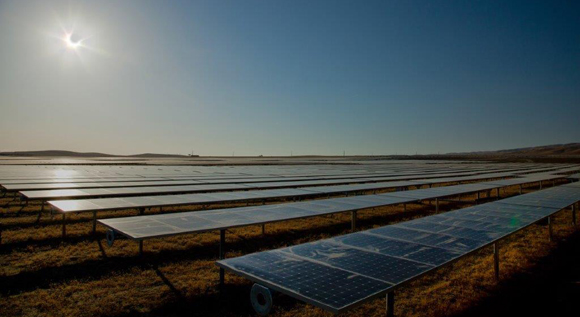Solar power despite solar eclipse
Generating electricity from photovoltaics is an important part of the energy transition. To make sure that this power is reliably fed into the grid, researchers also study more unusual events, such as solar eclipses.
 © Adobe Stock / Dennis M. Swanson
© Adobe Stock / Dennis M. Swanson
If you looked up into the sky on 25 October when the weather was right, you will have seen a rare natural spectacle: a partial solar eclipse. This is when the the moon – earth's satellite – passes a little way between Earth and the sun, partially obscuring it. This rare natural event has captivated people since time immemorial. But it is also of interest for current research work in photovoltaics. Researchers in this field are working on ways to convert solar energy into electrical energy.
Accurate forecasts enable reliable power generation
To help with the energy transition, more and more photovoltaic systems are being installed across Germany – from small, plug-in solar systems (known as balcony power plants) to solar systems on house roofs and huge solar farms. This means that the share of solar power is continuously increasing and needs to be able to flow safely into the power grid. All the while, natural fluctuations in electricity generation occur depending on whether it’s daytime or night, or what the weather is like.
In order to feed these fluctuating volumes of electrical energy smoothly into the grid, it is important to be able to predict the expected solar radiation as accurately as possible. This is especially important in view of the increasing number of installations connected to the grid and the possibility of extreme events taking place. With access to reliable forecast data, experts on the energy market and grid operators can then prepare themselves accordingly.
A science team led by the Fraunhofer Institute for Solar Energy Systems ISE is working with project partners to look at how this kind of data can best be provided and which methods are particularly suitable for gathering it. Some of this work is taking place under the SOLREV project. The researchers' goal is to be able to estimate as precisely as possible when and where solar power is generated and at what volumes. They are therefore analysing different models for solar radiation data and predictions.
A solar eclipse affects the generation of solar power
During the time that a solar eclipse causes the sky over a certain area of land to go dark, a lower volume of solar electricity is produced there. This means that the feed-in to the grid falls. The extent of this drop depends on how fully and how long the moon covers the sun. But the effect is certainly noticeable, which makes a partial eclipse important for forecasting models. Since weather forecasts do not routinely cover such extreme events, researchers at the Fraunhofer Institute for Energy Economics and Energy System Technology IEE have developed a method that reduces errors in forecasts for solar eclipses.
Their solution combines precise information on the time and place that the sky above the photovoltaic modules will go dark with weather forecast models. The data obtained in this way optimises the forecasts for regional and local photovoltaic feed-in.

